Nyheter
Navigating the Landscape of Global App Stores
Publicerad
5 månader sedanden

The crypto market has surged past $3T in total market capitalization, with smart-contract platforms leading the charge as risk appetite expands beyond Bitcoin. In particular, lean, cost-efficient blockchains have emerged as a key driver for onboarding users and boosting on-chain activity, as reflected in Figure 1.
• Solana soared 57% since the election, driven by memecoin-fueled retail interest and unprecedented DeFi activity, generating more revenue than Ethereum.
• Sui reached a new all-time high (ATH) near $4, also boosted by its gaming device pre-launch and consumer-friendly features.
• Aptos is gaining momentum for institutional-grade solutions like tokenization and payments, contributing to a recent price surge of 71%.
Figure 1 – Sector Price Performance Since Election Day

Source: Artemis, 21Shares
Given the proliferation of Layer 1s (L1s), it invites a closer examination of how the industry reached this point.
• Each L1 tackled the blockchain trilemma differently. While Bitcoin and Ethereum prioritized decentralization and security, later iterations focused on optimizing scalability.
• Ethereum’s first-mover advantage cemented the EVM as the standard for blockchain platforms, driving widespread adoption. However, its limitations spurred innovation, leading to the development of new virtual machines such as Solana’s SVM.
Despite these differences, each L1 plays a critical role in the on-chain ecosystem, tailored to unique use cases based on their architecture and features outlined in Figure 2 below.
Figure 2 – Technical Breakdown of Layer 1 Landscape

Source: Artemis, 21Shares
Below, we outline the unique strengths of each network, highlighting how they address various use cases in the order of their launch.
Ethereum – July 2015
The leading platform for decentralized applications (dApps) and a pioneer in smart-contract technology, as the first blockchain to introduce smart contracts.
• Ethereum laid the foundation for dApps and DeFi, commanding the highest liquidity with a Total Value Locked (TVL) of $60B.
• Its focus on decentralization and security, with more than 1M validators, makes it a trusted platform for tokenized government securities, totaling over $1.5B in assets.
• Ethereum hosts over 4,000 dApps, including prominent DeFi platforms like Uniswap and Aave, leveraging its unmatched network effects as the most widely adopted blockchain. While Layer 2 solutions enhance speed and efficiency, they have also introduced fragmentation, leading to reduced revenue.
Cardano – September 2017
The platform sets itself apart with a rigorous, research-driven approach to blockchain development.
• Introduced formal verification for smart contracts and enhanced Ethereum’s Proof-of-Stake (PoS) with Delegated Proof of Stake (DPoS), democratizing transaction validation.
• Collaborates with governments like Ethiopia to deploy Atala PRISM, enabling digital IDs that improve access to education and financial infrastructure in underserved regions. The network also promoted a transparent and efficient aid distribution system.
• Cardano’s growth has been hindered by slow development, a lack of EVM compatibility, and the absence of on-chain governance, resulting in a modest $456M TVL. Recent upgrades like the Chang Hard Fork foster a community-driven network, while the BitcoinOS integration will boost cross-chain utility by facilitating ADA-powered Bitcoin transactions.
Solana – March 2020
The network prioritized scalability powered by their innovative dual consensus model combining Proof of History (PoH) and PoS. With the ability to process nearly 3,000 transactions per second (TPS), Solana stands as one of the fastest blockchains available.
• This month, Solana’s DEX trading volume exceeded Ethereum’s by $40B, fueled by its efficient, low-cost blockchain and propelled by a dynamic DeFi ecosystem rich in retail-driven activity. This surge in trading volume has been a key driver behind the growth in Solana’s TVL, now reaching $8.3B.
• Solana powers decentralized physical infrastructure networks (DePIN) like Helium (broadband), Hivemapper (mapping), and Render (3D rendering), which demand high-speed, low-cost transactions at scale. Solana’s fast and efficient blockchain provides the necessary infrastructure for these applications to operate smoothly and cost-effectively.
• For Solana to deepen its integration with traditional finance—supported by PayPal’s PYUSD, which processes $30B, along with partnerships with Visa and Shopify—it must address ongoing network reliability issues, especially as its network experienced downtime once this year and multiple times over the past three years. The Firedancer validator client, capable of over 1M TPS on testnet, is positioned to reduce outages and enhance reliability, solidifying Solana’s role as a top solution.
Avalanche – September 2020
An EVM-compatible blockchain characterized by its subnet architecture, which enables customizable, permissioned networks connected to the Avalanche mainnet.
• Avalanche’s scalable subnet architecture enables customizable, permissioned networks with flexible gas fees, data privacy, and validator incentives. The Avalanche9000 upgrade enhances this with shared liquidity, lower validator costs, and full customizability, including geo-restrictions, making it ideal for tailored enterprise blockchain solutions.
• Avalanche’s Evergreen Subnets have attracted major TradFi players, including Franklin Templeton, which tokenized its $420M government money fund, as well as Citibank and Wellington Management exploring financial applications.
• Avalanche supports a wide range of industries, from Deloitte’s federal disaster reimbursement platform—designed to improve claim speed and transparency—to gaming projects like Shrapnel, which is built the GUNZ subnet. Its EVM compatibility and robust ecosystem pushed its TVL past $1B.
The Open Network (TON) – September 2021
A high-throughput blockchain designed for seamless user onboarding, TON aims to deliver a Web3 WeChat-like experience. Its strategic partnership with Telegram, which boasts 900M monthly active users, positions it as a key driver of mainstream blockchain adoption.
• TON’s Mini Apps act as a gateway to its on-chain ecosystem, leveraging projects like Hamster Kombat, which peaked at nearly 300M users, to drive retail adoption. However, its $300M TVL reflects a nascent financial ecosystem focused on simpler, retail-friendly use cases, leaving it comparatively underdeveloped in DeFi.
• Processing nearly 28M transactions this month, TON is strongly positioned to drive blockchain-based payments. Its recent USDT integration, surpassing $1B in supply within just seven months, further reinforces its potential in this space.
• Despite recent setbacks at Telegram, which operates independently from TON, the network’s growth this year underscores its strong potential. With scalable infrastructure and a vast addressable market, TON is well-positioned to onboard the next wave of users.
Aptos – October 2022
A high-performance blockchain leveraging the Move programming language, which was developed by Meta for their Diem project. Move prioritizes security and scalability, making it a strong contender for institutional use cases.
• Parallel processing enables sub-second settlement times and a theoretical throughput of 160K TPS, ensuring the performance needed for enterprise-grade applications.
• Aptos, led by ex-executives of Meta’s Diem project, is bringing institutions on-chain. Its credibility is bolstered by partnerships with TradFi giants like Microsoft, Franklin Templeton, and NBC Universal, alongside institutional-grade use cases such as Ondo’s tokenization platform. Alongside a growing DeFi ecosystem, which we’ll explore in detail later, these efforts have propelled its TVL to nearly $1B.
• Aptos streamlines Web3 access with keyless accounts, passwordless authentication, and transaction previews. Its support for emerging markets includes cost-efficient devices like the Jambo Phone, preloaded with blockchain tools. By combining advanced scalability with user-first design, Aptos is well-positioned for this cycle.
Sui – May 2023
Aptos’ twin is also a high-performance blockchain designed to deliver Web2-like simplicity to Web3. Also built on the Move programming language, it focuses on consumer-facing applications rather than institutional use cases.
• Sui caters to retail users with innovations like SuiPlay0X1, a gaming device bridging Web3 and traditional gaming. This focus has positioned Sui as a leader in consumer-facing dApps.
• Sui pairs sub-second finality and parallel processing with intuitive features like zkLogin for wallet creation via Google or Face ID, gasless interactions covered by apps, and QR-based payments with zkSend. By combining scalability with a user-friendly experience, Sui is primed to drive retail adoption and bridge the gap between Web2 and Web3, onboarding the next generation of crypto users.
• The recent launch of its Ethereum bridge and USDC support has significantly boosted Sui’s DeFi ecosystem, driving its TVL beyond $1.5B. This growth aligns with Sui’s recent ATH, just shy of $4.
We’ve just highlighted each blockchain’s unique features and selling points; now, let’s examine how these translate into real on-chain activity. We’ll assess key metrics like active addresses, decentralized exchange (DEX) trading volume, fees generated, and TVL to provide a clearer picture of each network’s performance.
Daily Active Addresses
Figure 3 – Daily Active Addresses on Smart-Contract Platforms in 2024

Source: Artemis, 21Shares
As shown in Figure 3 above, Solana emerged as a forerunner in user engagement, boasting the largest user base of 6.5M users driven by its trifecta of low fees, rapid transactions, and a user-friendly interface. A perfect storm for the memecoin frenzy that swept through the network this year, with more than 3.5M tokens launched on the memecoin factory pump.fun alone. Furthermore, Solana has become the preferred platform for the latest crypto trends, including tokens tied to AI-powered agents and DePIN protocols, as discussed earlier.
Similarly, Aptos has shown impressive user growth compared to other L1 blockchains like Avalanche, driven by its expanding DeFi ecosystem. Key developments fueling momentum include Blackrock’s BUIDL product expansion, the deployment of Tether’s USDT and Circle’s USDC on the network, and the upcoming integration of sBTC by Stacks. Together, these advancements are driving increased user enthusiasm and engagement across the network.
Ethereum, however, remains a formidable player, having effectively shifted a significant portion of its activity to L2 scaling solutions. This has resulted in almost 90% of transactions now occurring on L2s rather than the mainnet, underscoring the growing importance of scaling solutions as the execution layer for the legacy network. Despite this, L2s solutions have dramatically expanded Ethereum’s capabilities, achieving a 26-fold increase in throughput —382 transactions per second compared to 14 on the base layer—and attracting a user base of 2.6M, more than seven times Ethereum’s mainnet average of 350K users.
Decentralized Exchange Volume
Figure 4 – Decentralized Exchange Trading Volume on Smart-Contract Platforms in 2024

Source: Artemis, 21Shares
From a broader perspective, Ethereum and Solana dominate exchange activity, fueled by their thriving DeFi ecosystems. Ethereum has long maintained its top position, with the largest DeFi ecosystem boasting nearly $60B in TVL. Its financial applications have demonstrated remarkable resilience, withstanding multiple market challenges since 2020. In addition, Ethereum has been contributing almost 50% of all decentralized exchange (DEX) volume through the first three quarters of the year, until Solana flipped the script, as illustrated in Figure 4.
In fact, Solana has recently outpaced Ethereum across multiple metrics. For example, Solana’s DEX trading volume exceeded Ethereum’s by $40B in November, while its weekly DEX trading volume eclipsed Ethereum and all its Layer 2s combined during the final week of October. Additionally, three out of the top ten revenue-generating applications now operate on the Solana network. Notably, the Solana-based DEX Radyium generated $29B in trading volume over the last week, a 45% difference compared to Uniswap’s $20B. Furthermore, Solana-based platforms now account for three of the top ten DEXs, commanding over 40% of the total 24-hour trading volume across the entire crypto ecosystem.
Finally, while TON currently reports lower DEX volume and an underdeveloped DeFi ecosystem, its focus on simpler use cases has kept its TVL relatively modest. However, the upcoming Curve integration is expected to drive significant growth by enhancing stablecoin liquidity. Additionally, TON recently launched the testnet version of its bridging solution, enabling native Bitcoin transfers to its network. This breakthrough positions TON to tap into a vastly larger market, leveraging the $1.3T in dormant BTC.
Fees Generated
Figure 5 – Fees Generated by Smart-Contract Platforms in 2024

Source: Artemis, 21Shares
TON stands out among emerging platforms with its substantial network fees, driven by Telegram’s expansive Mini App ecosystem. This goes beyond crypto applications, integrating traditional services like ride-hailing and e-commerce, where TON-based assets are used for payments. Additionally, Telegram-centric offerings such as competitively priced global eSIMs, VPN solutions, and decentralized storage broaden its appeal, particularly to non-crypto-native users. All in all, this places TON as the third-highest fee-generating network compared to the other networks, which can be seen in Figure 8.
Alternatively, Solana has established itself as a fee-generating powerhouse, as depicted above in, Figure 5 with many leading dApps leveraging its high-speed, cost-effective blockchain. For example, the no-code memecoin creator platform Pump.fun has generated $220M in fees and attracted 150K users. Moreover, Solana-based protocols account for 50% of the top 15 fee-generating applications across all blockchains. Notably, trading bots Photon and BonkBot earn a combined $75M monthly, while Radium and staking provider Jito contribute $300M, collectively. This positioned Solana to currently generate 110% of Ethereum’s real economic value.
Finally, Ethereum’s recent Dencun upgrade led to a 90% reduction in L2 transaction costs. The upgrade introduced blobspace, an efficient data storage mechanism for L2 solutions. As this new system gains traction and approaches capacity, L2 transaction costs will gradually increase. This trend, already becoming apparent as shown below in Figure 6, suggests a potential resurgence in Ethereum’s mainnet revenue in the coming months.
Figure 6 – Ethereum Average Blob Count Per Block

Source: Dune Analytics, 21Shares
Total Value Locked
To recap, TVL serves as a crucial metric for financial ecosystems in the crypto space, analogous to assets under management in traditional finance.
Figure 7 – Total Value Locked in Smart-Contract Platforms in 2024

Source: Artemis, 21Shares
Ethereum, as the pioneer of DeFi, unsurprisingly maintains the largest TVL among all networks. However, the landscape is evolving rapidly.
Solana has emerged as a significant player, now commanding nearly 10% of DeFi’s TVL. This growth can be attributed to its seamless integration with traditional finance, expanding tokenization sector, and proliferation of payment-related use cases, as well as the surging maturity of its DeFi ecosystem.
Meanwhile, Avalanche continues to hold a substantial TVL, primarily due to its innovative subnet model that empowers businesses to create customizable networks with unprecedented control and flexibility. Consequently, Avalanche has become a hub for tokenization projects and institutional financial applications, both live and in development, as its network design effectively meets the business and privacy needs essential for TradFi.
In conclusion, these metrics provide a comprehensive view of the current standing and performance of various layer-1 blockchains. As seen in Figure 8, these platforms illustrate the diversity in blockchain usage patterns and provide insight into how each chain is positioned to compete in the landscape of blockchain-based applications. We believe there will not be “one chain to rule them all” and instead we will see a multi-chain future where certain chains are used over others for specific use cases.
Figure 8 – Summary of Key Metrics Across Smart-Contract Platforms

Source: Artemis, 21Shares
What’s happening this week?

Research Newsletter
Each week the 21Shares Research team will publish our data-driven insights into the crypto asset world through this newsletter. Please direct any comments, questions, and words of feedback to research@21shares.com
Disclaimer
The information provided does not constitute a prospectus or other offering material and does not contain or constitute an offer to sell or a solicitation of any offer to buy securities in any jurisdiction. Some of the information published herein may contain forward-looking statements. Readers are cautioned that any such forward-looking statements are not guarantees of future performance and involve risks and uncertainties and that actual results may differ materially from those in the forward-looking statements as a result of various factors. The information contained herein may not be considered as economic, legal, tax or other advice and users are cautioned to base investment decisions or other decisions solely on the content hereof.
Du kanske gillar
-
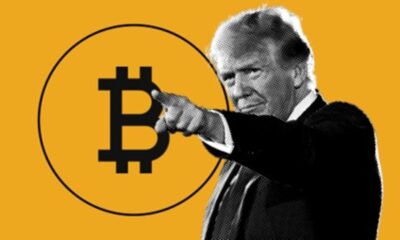

Trump’s trade war puts Bitcoin in the spotlight
-
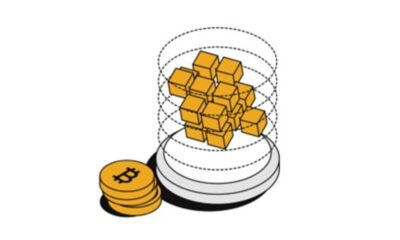

Bitcoin supply on crypto exchanges hits 5-year low and that’s a good sign
-
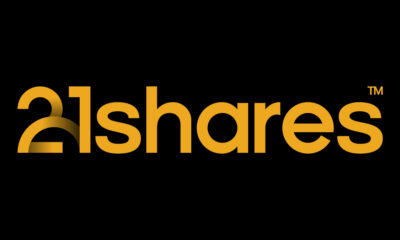

Markets Swing Wildly After Tariff Shock – Bitcoin Rebounds Strongly
-
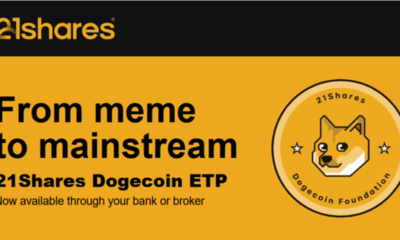

21Shares Dogecoin ETP: Drivs av community, omdefinierar kryptolandskapet
-


21Shares bildar exklusivt partnerskap med House of Doge för att lansera Dogecoin ETP i Europa
-


Michael Saylor’s bold Bitcoin bet and Strategy’s risk analysis
Nyheter
iShares och Franklin Templeton listar nya ETFer på Xetra
Publicerad
17 timmar sedanden
17 april, 2025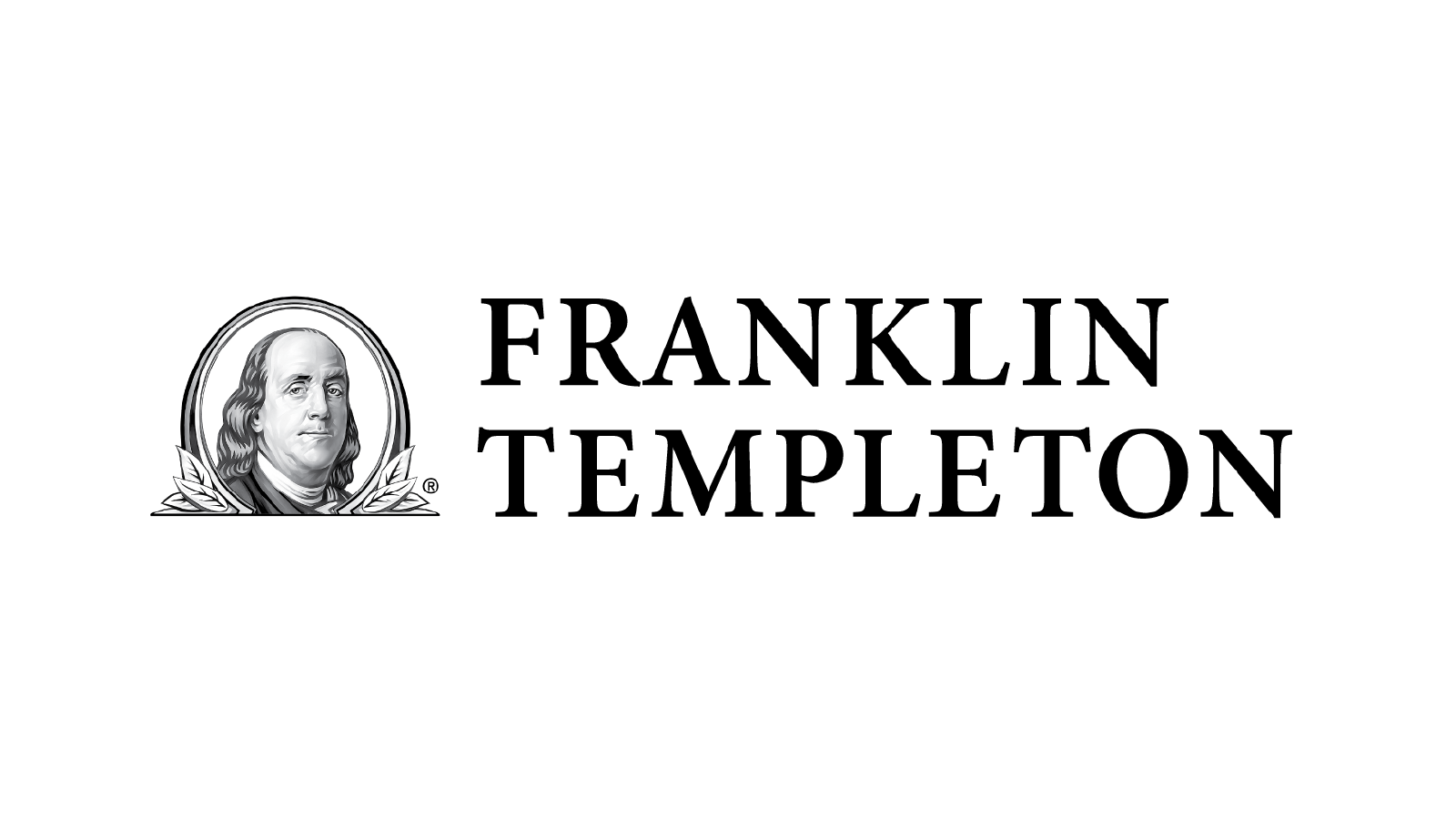
iShares S&P 500 3% Capped UCITS ETF investerar i de 500 största amerikanska företagen från de ledande branscherna i den amerikanska ekonomin, där inget enskilt företag står för mer än 3 procent av indexviktningen.
Franklin S&P 500 Screened UCITS ETF investerar i de nuvarande 408 största amerikanska företagen i S&P 500-indexet som anses vara miljömedvetna och socialt ansvarsfulla. Viktningen av företag justeras baserat på deras S&P Global ESG-poäng för att uppnå ett bättre totalt ESG-poäng än huvudindexet.
Franklin S&P World Screened UCITS ETF investerar i stora och medelstora företag från 24 utvecklade länder världen över som anses vara miljömedvetna och socialt ansvarsfulla. Viktningen av företag justeras baserat på deras S&P Global ESG-poäng för att uppnå ett bättre totalt ESG-poäng än S&P World Index.
| Namn | ISIN Kortnamn | Avgift | Utdelnings- policy |
| iShares S&P 500 3% Capped UCITS ETF USD (Acc) | IE000YIXESS9 SP3C (EUR) | 0,20% | Ackumulerande |
| Franklin S&P 500 Screened UCITS ETF (Acc) | IE0006FAD976 FSPU (EUR) | 0,09% | Ackumulerande |
| Franklin S&P World Screened UCITS ETF (Acc) | IE0006WOV4I9 FSPW (EUR) | 0,14% | Ackumulerande |
Produktutbudet inom Deutsche Börses ETF- och ETP-segment omfattar för närvarande totalt 2 404 ETFer, 198 ETCer och 256 ETNer. Med detta urval och en genomsnittlig månatlig handelsvolym på mer än 21 miljarder euro är Xetra den ledande handelsplatsen för ETFer och ETPer i Europa.
Nyheter
BE28 ETF företagsobligationer med förfall 2028 och inget annat
Publicerad
18 timmar sedanden
17 april, 2025
Invesco BulletShares 2028 EUR Corporate Bond UCITS ETF EUR Dis (BE28 ETF) med ISIN IE000LKGEZQ6, försöker följa Bloomberg 2028 Maturity EUR Corporate Bond Screened-index. Bloomberg 2028 Maturity EUR Corporate Bond Screened Index följer företagsobligationer denominerade i EUR. Indexet speglar inte ett konstant löptidsintervall (som är fallet med de flesta andra obligationsindex). Istället ingår endast obligationer som förfaller under det angivna året (här: 2028) i indexet. Indexet består av ESG (environmental, social and governance) screenade företagsobligationer. Betyg: Investment Grade. Löptid: december 2028 (Denna ETF kommer att stängas efteråt).
Den börshandlade fondens TER (total cost ratio) uppgår till 0,10 % p.a.. Invesco BulletShares 2028 EUR Corporate Bond UCITS ETF EUR Dis är den billigaste ETF som följer Bloomberg 2028 Maturity EUR Corporate Bond Screened index. ETFen replikerar resultatet för det underliggande indexet genom samplingsteknik (köper ett urval av de mest relevanta indexbeståndsdelarna). Ränteintäkterna (kuponger) i ETFen delas ut till investerarna (kvartalsvis).
Invesco BulletShares 2028 EUR Corporate Bond UCITS ETF EUR Dis är en mycket liten ETF med 1 miljon euro tillgångar under förvaltning. Denna ETF lanserades den 18 juni 2024 och har sin hemvist i Irland.
Produktbeskrivning
Invesco BulletShares 2028 EUR Corporate Bond UCITS ETF Dist syftar till att tillhandahålla den totala avkastningen för Bloomberg 2028 Maturity EUR Corporate Bond Screened Index (”Referensindexet”), minus påverkan av avgifter. Fonden har en fast löptid och kommer att upphöra på Förfallodagen. Fonden delar ut intäkter på kvartalsbasis.
Referensindexet är utformat för att återspegla resultatet för EUR-denominerade, investeringsklassade, fast ränta, skattepliktiga skuldebrev emitterade av företagsemittenter. För att vara kvalificerade för inkludering måste företagsvärdepapper ha minst 300 miljoner euro i nominellt utestående belopp och en effektiv löptid på eller mellan 1 januari 2028 och 31 december 2028.
Värdepapper är uteslutna om emittenter: 1) är inblandade i kontroversiella vapen, handeldvapen, militära kontrakt, oljesand, termiskt kol eller tobak; 2) inte har en kontroversnivå enligt definitionen av Sustainalytics eller har en Sustainalytics-kontroversnivå högre än 4; 3) anses inte följa principerna i FN:s Global Compact; eller 4) kommer från tillväxtmarknader.
Portföljförvaltarna strävar efter att uppnå fondens mål genom att tillämpa en urvalsstrategi, som inkluderar användning av kvantitativ analys, för att välja en andel av värdepapperen från referensindexet som representerar hela indexets egenskaper, med hjälp av faktorer som index- vägd genomsnittlig varaktighet, industrisektorer, landvikter och kreditkvalitet. När en företagsobligation som innehas av fonden når förfallodag kommer de kontanter som fonden tar emot att användas för att investera i kortfristiga EUR-denominerade skulder utgivna av det amerikanska finansdepartementet.
ETFen förvaltas passivt.
En investering i denna fond är ett förvärv av andelar i en passivt förvaltad indexföljande fond snarare än i de underliggande tillgångarna som ägs av fonden.
”Förfallodag”: den andra onsdagen i december 2028 eller sådant annat datum som bestäms av styrelseledamöterna och meddelas aktieägarna.
Handla BE28 ETF
Invesco BulletShares 2028 EUR Corporate Bond UCITS ETF EUR Dis (BE28 ETF) är en europeisk börshandlad fond. Denna fond handlas på flera olika börser, till exempel Deutsche Boerse Xetra och Borsa Italiana.
Det betyder att det går att handla andelar i denna ETF genom de flesta svenska banker och Internetmäklare, till exempel DEGIRO, Nordnet, Aktieinvest och Avanza.
Börsnoteringar
| Börs | Valuta | Kortnamn |
| Borsa Italiana | EUR | BE28 |
| XETRA | EUR | BE28 |
Största innehav
| Namn | CUSIP | ISIN | Kupongränta | Vikt % |
| Volkswagen Leasing GmbH 3.875% 11/10/28 | D9T70CNQ3 | XS2745725155 | 3.875 | 2.20% |
| Swedbank AB 4.25% 11/07/28 | W94240FJ7 | XS2572496623 | 4.250 | 1.63% |
| ABN AMRO Bank NV 4.375% 20/10/28 | N0R37XLP3 | XS2613658710 | 4.375 | 1.62% |
| Carlsberg Breweries AS 4% 05/10/28 | K3662HDY6 | XS2696046460 | 4.000 | 1.60% |
| RCI Banque SA 4.875% 14/06/28 | F7S48DSE5 | FR001400IEQ0 | 4.875 | 1.59% |
| Booking Holdings Inc 3.625% 12/11/28 | — | XS2621007231 | 3.625 | 1.59% |
| Banco Santander SA 3.875% 16/01/28 | E2R99DB46 | XS2575952697 | 3.875 | 1.58% |
| Nordea Bank Abp 4.125% 05/05/28 | X5S8VP8C3 | XS2618906585 | 4.125 | 1.58% |
| E.ON SE 3.5% 12/01/28 | D2T8J8CT1 | XS2574873266 | 3.500 | 1.57% |
| General Motors Financial Co Inc 3.9% 12/01/28 | U37047BA1 | XS2747270630 | 3.900 | 1.57% |
Innehav kan komma att förändras
Nyheter
Trump’s trade war puts Bitcoin in the spotlight
Publicerad
19 timmar sedanden
17 april, 2025
Since U.S. President Donald Trump announced tariffs on April 2, termed ”Liberation Day,” global markets have experienced significant volatility. The S&P 500 shed $5.83 trillion in market value over just four days, marking its steepest drop since the 1950s. Asian markets saw their worst session since 2008, reflecting widespread fears of an economic slowdown.
The U.S. 10-year Treasury yields initially fell below 4% as investors sought safety, but by April 8-9, they surged to a seven-week high of 4.515%. This spike, driven by bond market sell-offs potentially from basis trading or China’s strategic moves to pressure U.S. negotiations, suggests a precarious economic situation rather than risk-on sentiment.
On April 9, President Trump announced a 90-day pause on tariffs for most countries (excluding China, where tariffs jumped to 145%) in an effort to give markets time to absorb the changes and calm volatility. The move sparked a broad rally, with the S&P 500 surging 9.5% for its best day since 2008 and Bitcoin rebounding above $80,000 after a turbulent stretch.

Bitcoin is macro now
Despite persistent concerns about crypto volatility, Bitcoin’s price over the past two weeks has closely mirrored the S&P 500 and has actually been less volatile. This alignment reflects Bitcoin’s growing maturity as an asset class and highlights its resilience. As a highly liquid and accessible asset, it continues to attract investors looking for relative value in turbulent markets.
Sentiment shifts toward crypto ETFs
Spot Bitcoin ETFs recorded $700 million in outflows, while Ethereum ETFs lost $400 million since March, marking a sharp reversal after nine consecutive months of inflows. The pullback points to growing institutional caution amid broader macro uncertainty. Still, on-chain data reveals that long-term holders have been steadily accumulating since January lows, signaling continued confidence in the asset class.
Macroeconomic uncertainty takes center stage
The latest U.S. CPI print came in at 2.4%, which was lower than expected. A rate cut in May still seems premature as markets assess the full impact of new protectionist measures. Federal Reserve Chair Jerome Powell has warned that tariffs could raise inflation while slowing growth. As a result, the probability of three rate cuts in 2025 now exceeds 60%. Declining yields may be an early signal of future monetary easing, which could favor risk assets like crypto if economic pressures intensify.
Bitcoin: Dollar’s ally or alternative?
In the face of policy uncertainty, the debate around the U.S. dollar’s reserve currency status is gaining momentum. With its decentralized and censorship-resistant design, Bitcoin is emerging as both a potential complement and challenger to the dollar, especially as the U.S. increasingly wields its currency as a geopolitical tool through tariffs and sanctions.
Meanwhile, Bitcoin’s fundamentals remain solid. Hashrate is at all-time highs, regulatory clarity is improving, and long-term holders continue to accumulate. With prices consolidating above $80K, the current correction may offer a strategic opportunity for investors positioning for the next leg of growth, particularly as the macro picture evolves.
Research Newsletter
Each week the 21Shares Research team will publish our data-driven insights into the crypto asset world through this newsletter. Please direct any comments, questions, and words of feedback to research@21shares.com
Disclaimer
The information provided does not constitute a prospectus or other offering material and does not contain or constitute an offer to sell or a solicitation of any offer to buy securities in any jurisdiction. Some of the information published herein may contain forward-looking statements. Readers are cautioned that any such forward-looking statements are not guarantees of future performance and involve risks and uncertainties and that actual results may differ materially from those in the forward-looking statements as a result of various factors. The information contained herein may not be considered as economic, legal, tax or other advice and users are cautioned to base investment decisions or other decisions solely on the content hereof.

iShares och Franklin Templeton listar nya ETFer på Xetra

BE28 ETF företagsobligationer med förfall 2028 och inget annat

Trump’s trade war puts Bitcoin in the spotlight

YCSH ETF är en satsning på den europeiska dagslåneräntan

Crypto’s stress-tested resilience

Fonder som ger exponering mot försvarsindustrin

Crypto Market Risks & Opportunities: Insights on Bybit Hack, Bitcoin, and Institutional Adoption

Warren Buffetts råd om vad man ska göra när börsen kraschar

Montrose storsatsning på ETFer fortsätter – lanserar Sveriges första globala ETF med hävstång

Svenskarna har en ny favorit-ETF
Populära
-
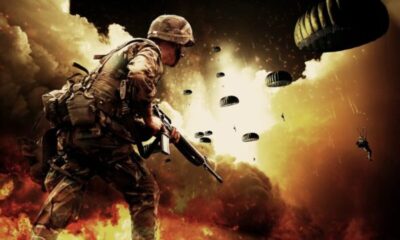
 Nyheter4 veckor sedan
Nyheter4 veckor sedanFonder som ger exponering mot försvarsindustrin
-

 Nyheter3 veckor sedan
Nyheter3 veckor sedanCrypto Market Risks & Opportunities: Insights on Bybit Hack, Bitcoin, and Institutional Adoption
-

 Nyheter3 veckor sedan
Nyheter3 veckor sedanWarren Buffetts råd om vad man ska göra när börsen kraschar
-

 Nyheter2 veckor sedan
Nyheter2 veckor sedanMontrose storsatsning på ETFer fortsätter – lanserar Sveriges första globala ETF med hävstång
-

 Nyheter3 veckor sedan
Nyheter3 veckor sedanSvenskarna har en ny favorit-ETF
-
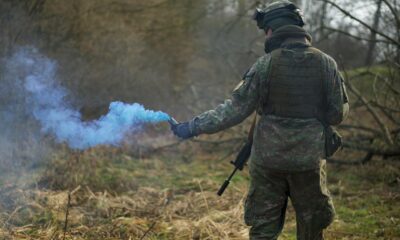
 Nyheter4 veckor sedan
Nyheter4 veckor sedanHANetf lanserar Europa-fokuserad försvars-ETF
-

 Nyheter2 veckor sedan
Nyheter2 veckor sedanMONTLEV, Sveriges första globala ETF med hävstång
-

 Nyheter3 veckor sedan
Nyheter3 veckor sedanFastställd utdelning i MONTDIV mars 2025


